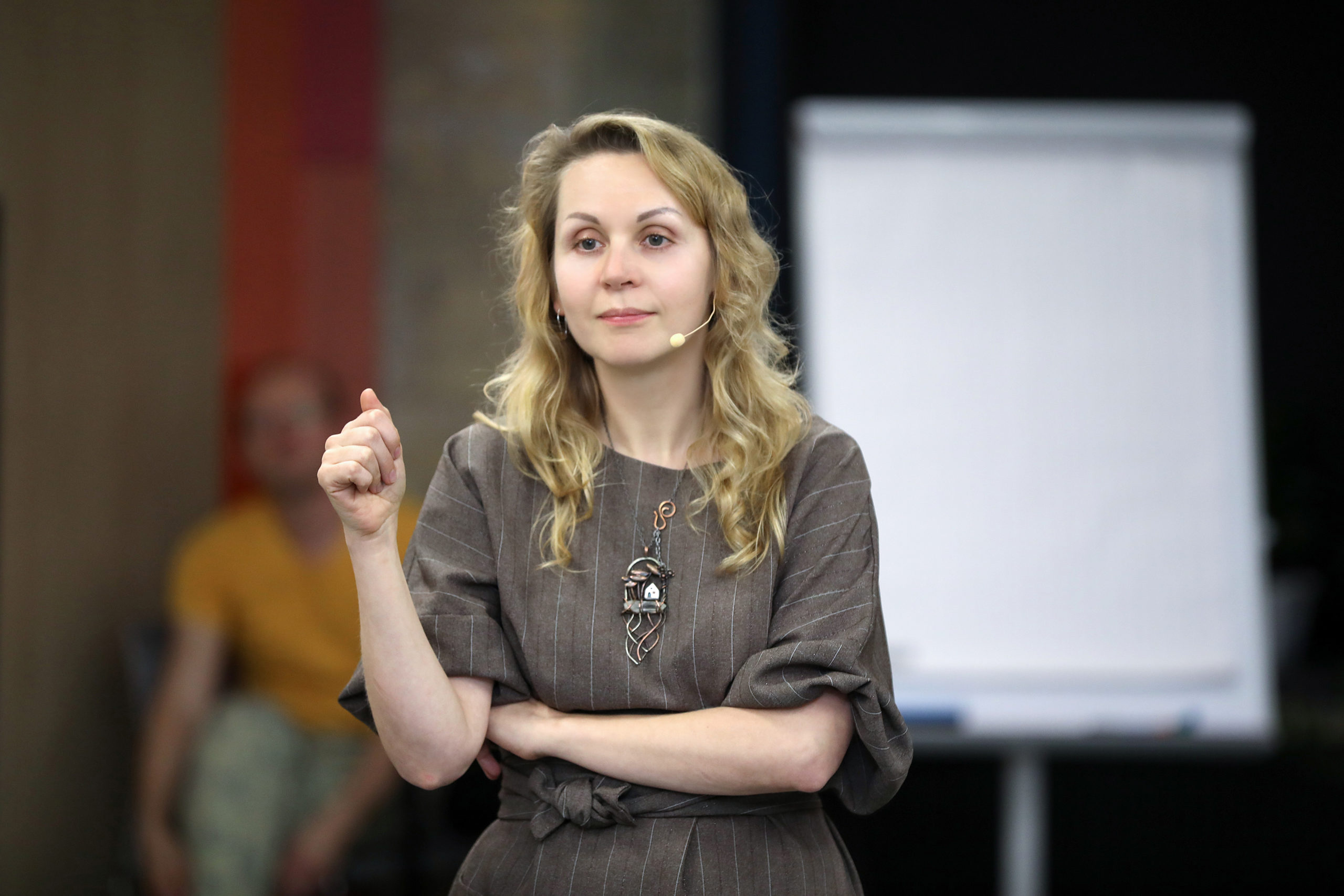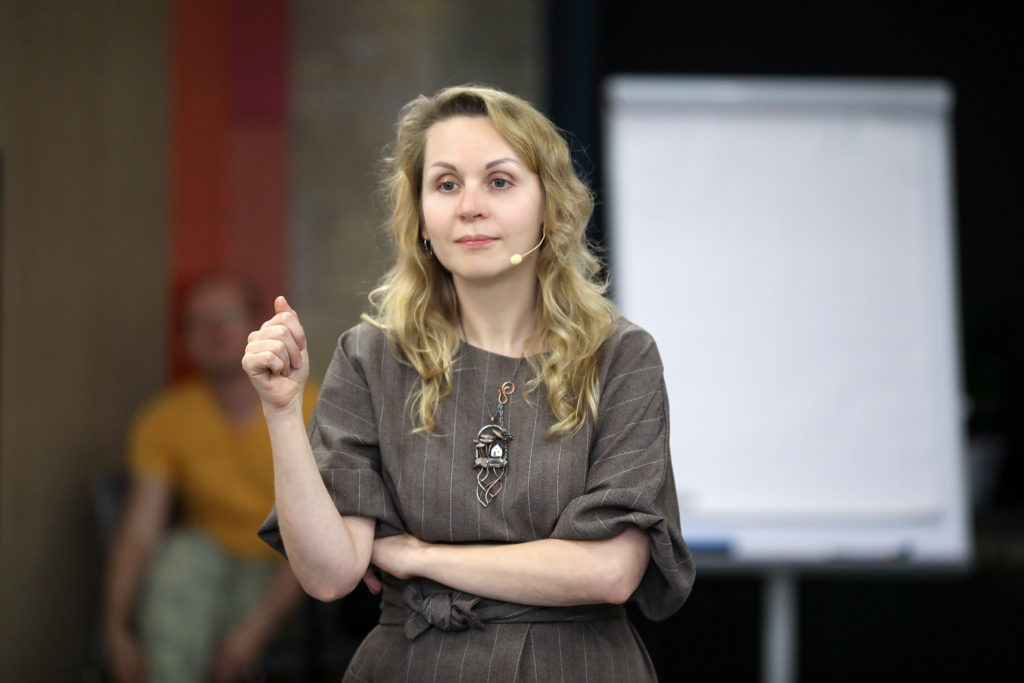
Training for RTM™ therapy in Ukraine
Training for RTM™ therapy in Ukraine
The war in Ukraine has resulted in increased exposure to traumatic incidents and subsequently higher instances of trauma in the Ukrainian population.
As a result, a recent training program has been arranged with coordination support from the Mental Health for Ukraine project team. This has been led by international volunteer councillors and has been delivered to 30 Ukrainian volunteer therapists with the aim of providing an alternative form of therapy to those suffering from trauma.
The therapy, known as Reconsolidation of Traumatic Memories (RTM™) is a non-drug reimaging (patent-pending) protocol developed by the Research and Recognition Project¹.
We asked one of the Ukrianian trainees, Viktoriia Gorbunova, who is also an experienced therapist, to share her experience so far.
Viktoriia Gorbunova
(Doctor of Psychological Sciences, Certified Therapist in Reconsolidation of Traumatic Memories™ Therapy)

Viktoriia is a Ukrainian Doctor of Science and Psychotherapist. She has accreditation in a number of therapies including Cognitive Behavioural (CBT), Interpersonal and Psychodrama. In addition to this, she recently underwent an accreditation process to become a Reconsolidation of Traumatic Memories™ (RTM™) therapist, this was approved on May 24th.
“How has the war in Ukraine impacted the nature of your work?”
Viktoriia explains that the war situation in Ukraine has affected the focus of her work.
She explains that in the first phase of the war in 2014, she practiced using a classic model of Trauma-Focused CBT. In cases of PTSD, this resulted in at least 14 sessions per client.
With a colleague, she also established a trauma-therapy centre in Lviv, named the Space of Hope. There, she worked with internally displaced Ukrainians as well as veterans and their families. They used a multidisciplinary approach with a centre case manager, a rehabilitation program, a psychiatrists and psychotherapists. Initially, the program was supported with a grant funded by International Alert. After a few years, the project was finished and the centre was supported by clients, volunteer workers and funds from the Ukrainian Catholic University.
Now that a new wave of war has begun, Viktoriia explains that she has been forced to flee Ukraine and is currently residing in Germany, she tells us she hopes to return soon. More recently, she was offered the opportunity to train and practice as an RTM™ therapist. Her work now involves volunteering virtual support to military staff who have been injured and are hospitalised.
“What is RTM™ Therapy”
Victoriia states that in RTM™ , Trauma-Focused CBT and in Eye Movement Desensitisation and Reprocessing (EMDR), the therapy is delivered through narrativization. However, RTM™ differs in the way the story is recalled by the client.
In RTM™ therapy, the client must retell the story internally using different tools. She describes the first rescripting tool as:
“Retelling it as if it were a film in front of your eyes, you should visualise it very fast and in black and white, then repeat this in a backwards manner.”
“All of this exercises and also rescripting exercises prepare the client to be ready to meet the real story, in every detail with deep immersion.”
“Once the client is ready, only then, do you ask them to tell you the whole story with all of the details. This can be retold verbally or privately in their own head.”
Viktoriia recalls how impressed she was when she first read about RTM™.
“It has not yet been fully accepted by NICE as a recommended method, but it is getting there and I think it will not take long.”
She also explains the neurobiological concepts behind the method, the therapy is aimed at helping clients process and recall their story, this enables their amygdala to remain calm and leave the rest of their neural system undisturbed.
“This form of storytelling helps integrate all of the trauma and find a proper place for it in your timeline of memories.”
“How does it differ from other trauma focused therapies?”
Viktoriia explains that one of the biggest differences between RTM™ therapy and other therapies is the time needed to deliver it. Whilst other trauma therapies can require between 14 and 16 sessions, RTM™ only requires 3 to 5. In addition to this, RTM™ therapy sessions can be delivered on consecutive days, which is not the case for other methods.
“For me it is kind of a miracle to be able to do this in only 5 sessions”
“I now prefer to work as an RTM™ professional because it is the most efficient tool for me to do my work quick, in the current situation I don’t have the luxury to work all 14-16 sessions as a CBT trauma focused therapist.”
Another distinction between RTM™ and other therapies is that it is possible to have clients narrativize their experience internally without the requirement that they share it with their therapist. Viktoriia states that this is of particular advantage when working with individuals who would rather keep the narrative to themselves, or military services who cannot disclose certain details of their story due to confidentiality restrictions. This also acts as a protective barrier for therapists, particularly when aspects of the story are particularly graphic.
“And also it is quite good actually for the client, because they can keep the most painful parts to themselves. I don’t want to say that something should remain hidden, the person is in the process of remembering and working on this pain but they do not have to share it vocally, it is not obligatory.”
“Can you tell us about the RTM™ training process?”
After hearing about the therapy and the theory behind it, Viktoriia decided to make her application to become an RTM™ therapist.
“The process of learning was quite interesting, we worked 5 days in a row and every day was well structured with lots of detailed explanations.”
“What was the most interesting and valuable for me was that throughout all of the sessions, our supervisor was there to support us. I mean that for example, in a 90-minute session, I was supervised step by step with every intervention and decision.”
“I could ask for support, advice, throughout the whole way it was very helpful. Actually, it was the first time for me where I was supported like that.”
Viktoriia states that she has started working online with military people currently at service who have troubles with flashbacks and sleep.
She describes the training process as strict with very specific steps. Everyone should be assisted throughout, and only once all of the procedures have been approved can they become national trainers. She adds that the RTM™ training team maintain discipline by ensuring no one steps out of the RTM™ protocol.
“You should keep going line by line, word by word, sentence by sentence. You should be very careful not to bring anything from the outside into the therapeutic process. The education process is very serious and formal to maintain the quality.”
Case study
Viktoriia discusses a case which she describes as a particularly valuable experience. She was treating a client who was working as an officer with the role of death notification, this meant his job involved finding the bodies of other service members and notifying their families of their death.
She describes this job as very difficult, and as a result, the client was experiencing flashbacks when working. When identifying bodies, he had started imagining in anticipation that the body would be someone in his life who was currently alive, such as a friend or a relative. She explains that to deliver RTM™ therapy, you must select 3 of the hardest events the individual has experienced and work through them one-by-one. In this case, they chose his first death notification case. What distinguished this patient from her previous clients is that he was actively working at service, and therefore he was repeatedly exposed to the trauma he had experienced.
“Actually, it was very successful, for now, this brave officer doesn’t have any flashbacks and their sleep is improved. And actually, since the therapeutic evaluation, I have great hope. Prior to therapy they (the officer) had high levels of depression, and now it is reduced significantly. It was not the aim of therapy- it was an additional outcome and that is great.”
“How do you measure the impact of RTM™?”
Viktoriia explains that the impact of RTM™ therapy on the client is measured throughout, with emotional distress measures taken after every retelling of their trauma story. Following treatment, follow-up assessments will be conducted after a 2 week period and then a 3-month period.
“I have already did the 2 week follow up but I do not have the second as it has not yet been 3 months. I think that this Autumn I will have the results from the final assessment because I try to stay in touch with all my clients. I ask them about their wellbeing, if they have any flashbacks or sleep troubles etc… I am grateful that my clients keep in contact.”
So far, Viktoriia has conducted the 2-week follow-up for 7 of her clients.
“What would you describe as the next steps in RTM™ therapy?”
Viktoriia states that 30 people have been trained in RTM™ therapy in Ukraine so far, however this was restricted to English speaking therapists. She hopes to be part of Training for Trainers program now she has received accreditation, with the aim of providing RTM™ training for therapists and supervisors to a wider audience in Ukraine.
“I think that after the war ends, RTM™ has a good future, because trauma is not only about war, it is about all kinds of events which are threatening, which are dangerous. It could be a car crash, domestic violence, any range of events. I think that we will be happy to have a lot of RTM™ therapists, so that we can improve our nations mental health.”
She also explains that further developments of RTM training™ could be helpful to support emerging issues which have been amplified by the war.
“I haven’t worked with victims of rape and sexual abuse, but I think RTM™ has the possibility of being helpful for them, as RTM™ provides the choice to not verbally share everything. I think you might know that, right now in Ukraine we have a lot of such cases/victims.”
She concludes our interview by explaining that RTM™ therapy should not and will not be the only approach used for trauma therapy. She explains that RTM™ is directed at 2-3 particular events. Therefore, for individuals needing support from events stemming throughout their childhood or ongoing conflicts, other therapies may be more suitable. She also adds that RTM™ therapy requires a strong level of imagination, and not everyone is capable of this. In these instances, she advocates the ongoing support of therapies such as Trauma-focused CBT and EMDR.
References
¹ Research & Recognition Project. (n.d.). Randrproject.org. Retrieved June 30, 2022, from https://randrproject.org/
Certain links in this newsletter lead to websites which are not under the control of Implemental Worldwide CIC. Implemental Worldwide CIC has no control over and accepts no liability in respect of materials, products or services available on any website which is not under the control of Implemental Worldwide CIC. Any opinions expressed in these external links and materials do not necessarily reflect the view of Implemental Worldwide CIC. Some of these links may request additional information and it is at your sole discretion if you wish to provide this. Any advertisements or promotional material contained in the links to websites and other materials, are not endorsed by Implemental Worldwide CIC and Implemental Worldwide CIC makes no commercial gains through these links.
I'M FREE!
To register to our newsletter
Leave your email and receive news and useful wellbeing tips!